After last week’s post about Wilfried Sätty‘s illustrated Poe, I thought I’d follow it up with this 1970 interview from Man, Myth & Magic, a part-work publication which built weekly into a seven-volume “illustrated encyclopedia of the occult”. In the back of each issue there was a two-page feature, Frontiers of Belief, usually featuring more topical material, and issue 36 had Sätty as its subject. The interview captures him just after he’d been building his reputation as one of San Francisco’s psychedelic poster artists and just before the book collections of his collage work started to appear. The description of his working methods inevitably plays up the occult associations but helps to give a little insight into the artist. The first two pictures here are from the published article to which I added a couple of the album covers he produced in the 1970s. There’s also a poster for an exhibition with friend and fellow artist David Singer whose lettering adorned many of Sätty’s posters.
A note about Sätty’s name: he was known as Wilfried Podriech when he came to America but changed his name to Sätty thereafter. This surname is often reproduced without an umlaut over the “a” which I regard as an error. When Jay Babcock, Richard Pleuger and I visited David Singer to discuss Sätty’s work (and see some of Singer’s own) we were informed that Sätty’s adopted name was intended to be reminiscent of the Egyptian Pharaohonic name Seti. The umlaut over the “a” gives the pronunciation setty; without it would be satty.
* * *
ARTIST OF THE OCCULT by Robert W. Neubert
Alchemy can be a state of being according to Sätty, a German-born artist who now lives in San Francisco; and he believes that this concept can be extended to art. In his attempts to plumb the depths of the subconscious he makes use of his collection of occult works, including a 17th century alchemical text and a book of healing and magic published in 1648.
Blue and orange flames flicker from an ancient urn and throw dancing shadows about a dimly-lit subterranean chamber in San Francisco, California. Old, dark-hued tapestries hang from the walls and low ceiling, and occult art objects are crammed into every corner. Baroque harpsichord music filters through the incense-scented air.
Descending a wooden ladder into the nearly black chamber is a tall, lanky man with flowing brown hair, a dark blue Western-styled shirt, and grey flared slacks. He carries under his arm a mystical-looking montage he has recently created and run off on a lithograph press.
The montage is in poster form, and it is a haunting collection of Renaissance and medieval themes, incredible in its intensity, colour and creativity.
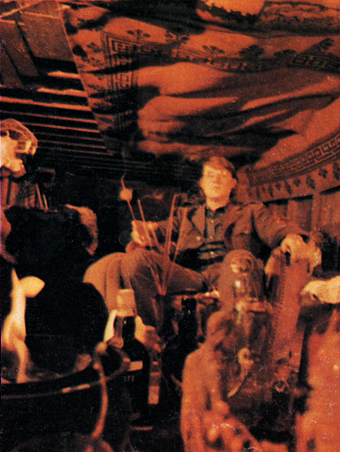
Sätty photographed for Man, Myth & Magic (1970).
The artist is Sätty, a German-born montage-maker with a dream—a dream of plumbing the depths of the subconscious by utilizing alchemy and mysticism in his work.
Alchemy is essential to his creativity, he says. But the 31-year-old artist’s definition of alchemy has a broader meaning than the classic textbook definition of transmuting base metals into gold. He is one of the first non-commercial poster makers, and his work far transcends the psychedelic art used to advertise San Francisco rock and roll dances.
“Alchemy can be a state of being,” he says. “There is such a thing as visual or intellectual or artistic alchemy. The undeveloped mind may be considered akin to lead, the fully-realized mind as gold. And the same is true of art. Much of contemporary art is lead.”
Sätty considers Albert Einstein a great alchemist because his formulas combine the technical and the philosophical. Einstein is an example he uses when stating that most people interpret mysticism the wrong way. Some use it “to make a lot of money, but most just don’t know what it’s all about,” he says.
“Words like mysticism have been prostituted,” he believes. “What we’re basically dealing with in my artwork is the subconscious. To produce truly lasting art you need images, ideas. Everything else becomes a technicality.
“There really is another world within our world. Through the imagination you can see it. It’s a matter of will. Almost everyone can achieve it if he activates only one centre of the brain at a time.
“Although there’s great strength you can draw from this action, there’s also a price you must pay. The old alchemists warn that if you exercise these things you must be careful, and take extra care of yourself. Unfortunately a lot of people have entered a state of mental pollution because of the mass media. They don’t know the difference between truth and lies. But if you can open up their subconscious, they can learn.”
Sätty attempts to implement his vision through a fantastic and massive occult collection that dates back to a 1630 alchemy text and a 1648 magic and healing hook. The old volumes have mystical artwork that often inspires him and becomes part of his alchemic experiments with art.
Sätty went to the United States in 1961. Six years ago he married an American citizen of French, German and American Indian extract, and they live happily today in a modest apartment near his studio. Mary, his wife, must work to help support his art experiments, but she too believes in his dream.
Gandharva (1971) by Beaver & Krause. Art by Sätty, lettering by David Singer.
“I’m also very heavily into colour-mixing, which I also consider a form of alchemy,” he says. “By experimenting with new applications of colours, I think I can help to open up the subconscious. When I imprint these new combinations of colours over mystical prints, I use the big lithograph press just like a paintbrush.”
In addition to engravings, line drawings and silkscreens, Sätty has a beautiful collection of fine quality European xylographs (an old process of reproducing photographs by woodcuts), according to Robert Kingsbury, art director of Rolling Stone, a pop music magazine which publishes many Sätty montages.
Sätty experienced graphically the horror of living in a country ravaged by war. His native Bremen was two-thirds destroyed by fire bombs, and an air raid shelter in which he hid one evening suffered a direct hit that killed most of its several hundred occupants. After the war, he and other youths crawled through the city’s sewers, and broke into cellars to steal marketable booty. One day he tunnelled into a cellar and discovered two skeletons.
“I was always an artist,” he says, “but I was brought up in the German tradition to learn a trade—industrial design. As soon as I was able, I left Germany to work as a seaman. It was then that I began my art and book collecting in earnest, for I was able to buy things all over the world.”
In addition to the subterranean chamber and studio above it, Sätty maintains another underground room carved into the bedrock of a hill in the city. There he mixes colours and sometimes pauses to sleep “until the need for sleep is fulfilled”. A productive and tireless artist (“I’m an Aries. That’s where all my energy comes from,”), he has spent as much as 300 hours over the period of a year on a single montage before he was satisfied with it. He often works far into the early morning hours, developing his own colours whenever possible from earth materials.
The smaller chamber houses much of his extensive library and many of his unusual art objects. It is paid for by a secret patron, while montages published by Rolling Stone pay for most of the main studio and basement.
The young montage-maker considers his work a sacred trust, and he refuses to sell out his beliefs for any amount of money. As he sits in an overstuffed chair in the chamber, the urn’s fire is reflected in his rimless eyeglasses. He closes his eyes and softly utters a German phrase, which translates roughly into: If a person lies to you once, the trust is broken.
One art critic notes that Sätty’s work is better known nationally in America than in San Francisco. But despite the fact that more than a million of his posters have been sold throughout the world, he has not achieved widespread acclaim. Recognition may be close at hand, though, for a book of his montages is being published. In America, and he will have a gallery showing in December.
Exhibition poster (1970s?). Art by Sätty, lettering by David Singer.
“The poster trip has fallen into the hands of straight businessmen who want to make a fast buck,” Sätty states, “But I’m convinced that if the artist remains independent from merchandising and avoids stereotyping, he can bring about a renaissance.
“There are still people who will support art on its merit. It’s unfortunate, though, that industry and the galleries feed abstract art, because abstract art suppresses the subconscious—it suppresses thinking.
“Abstract art is just that—abstract. History will record it as merely a decorative form of art which existed as only a flash in the history of mankind.”
The shadows in his chamber deepened as the urn’s flames grew dimmer, and Sätty smiled slightly as he continued to explain his artistic commitment.
“I’ve had a lot of chances to make money by doing what other people wanted me to do. But being satisfied is more important. It’s more important to be happy. I have a good feeling about my work.
“This is only the beginning. I think the process I’m developing can become one of the most beautiful of art forms.”
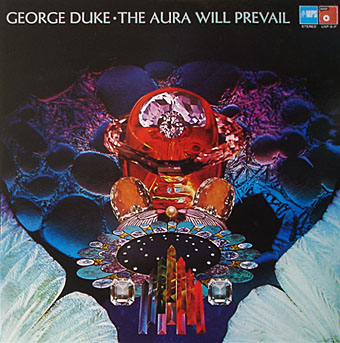
Sleeve illustration by Sätty (1975).
To some critics, it already is. “Sätty is one of the rare cats who’s combining the whole visionary scene with the technological,” according to newspaper art critic Thomas Albright. “In the past, he was more involved with the technology of montage-making, but now he’s pulling it all together with the visionary images. His work shows more depth and ambition now.”
The transplanted German believes occultism is as natural and real as eating or breathing. He will not rest until he has shared his vision with the rest of the world. •
Man, Myth & Magic #36, 1970.
Select bibliography:
The Cosmic Bicycle (1971) by Sätty, Straight Arrow Books
Time Zone (1973) by Sätty, Straight Arrow Books
The Annotated Dracula (1975) by Bram Stoker, Crown Publishers
The Hasheesh Eater (1975) by Fitz Hugh Ludlow, Level Press
The Illustrated Edgar Allan Poe (1976), Warner Books
Visions of Frisco: An Imaginative Depiction of San Francisco during the Gold Rush & The Barbary Coast Era (2008) by Sätty, Regent Press
Elsewhere on { feuilleton }
• The album covers archive
• The fantastic artists archive
Previously on { feuilleton }
• Illustrating Poe #4: Wilfried Sätty
• Metamorphosis Victorianus
• Max (The Birdman) Ernst
• Gandharva by Beaver & Krause
• The art of Stephen Aldrich

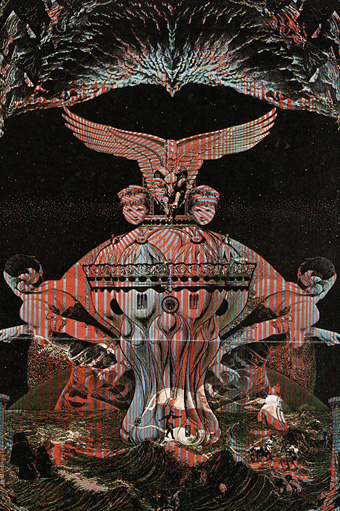
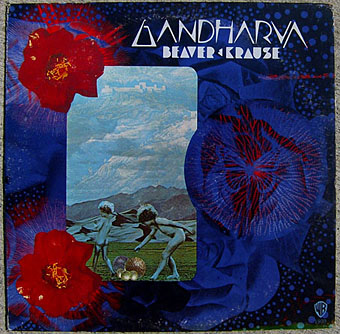
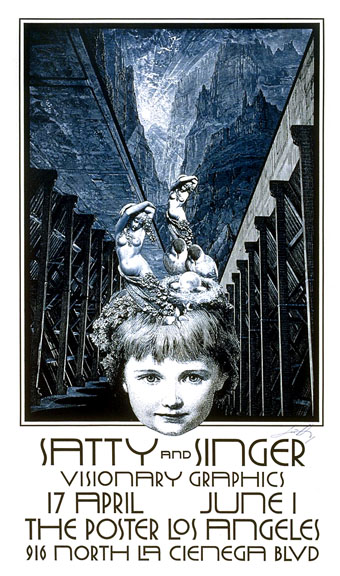
thanks for posting more of this fantastic artist.
This was the first place id heard of Satty. Man myth and magic was a wonderful resource.
It was indeed. MMM was the place I first encountered the work of Austin Spare.
Fantastic, one of my favourites too, have the illustrated eap, divine!
… and hes very right about occultism ;) many thanks for post.
Hi, part of this quote seems to be missing–can somebody fill in the missing text or correct the typo for me?
Thanks!
“There really is another world within our world. Through the imagination you can see it. It’s a matter of will. Almost everyone can achieve it the activates only one centre of the brain at a time.
Hi Chad. Thanks for the alert, the scanning software had managed to miss a word then interpret a blotch on the page as a letter. And I should have read the piece through properly…
Thanks for reprinting the article I wrote long ago on Satty for Man, Myth & Magic. Nice to see the visionary “occult artist and alchemist” remembered online. The few hours I spent with him in his San Francisco underground chamber stands out as one of the most fascinating interviews I was privileged to conduct. Fortunately I still have a signed and framed collage on canvas dated 1969, and some artist proofs of posters that he gave me after the interview. So Satty Lives. At least in my house.
Hi Bob, and my thanks to you for this piece! By the time I saw this interview (in a back issue in the early 1980s) I knew Sätty’s work from his Poe book but this was the first clue to the man behind those fascinating works which are still inspiring other artists (myself included) today.
Another great discovery, thanks to you.
I found more Sätty on this page : http://assemblyman-eph.blogspot.com/2009/09/collages-of-wilfried-satty-podriech.html
Yes, I saw that when he first posted it. He links here and I left a comment as well.
I have a poster by Satty of Alchemical horses in good condition,if anyone is interested.
just came across this – very similar to Satty…http://www.danhillier.com/
Yes, Dan Hillier gets mentioned on Boing Boing quite often.